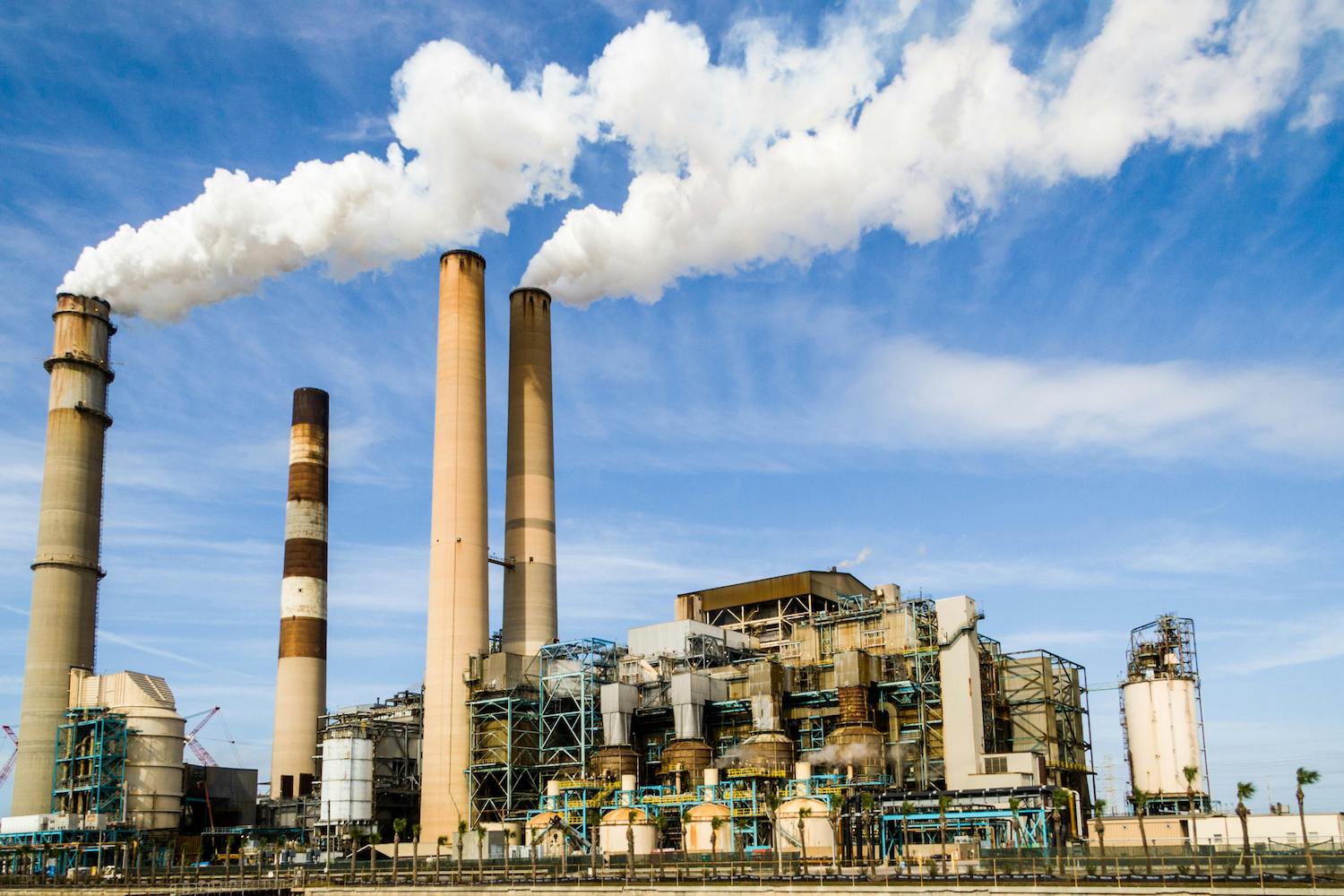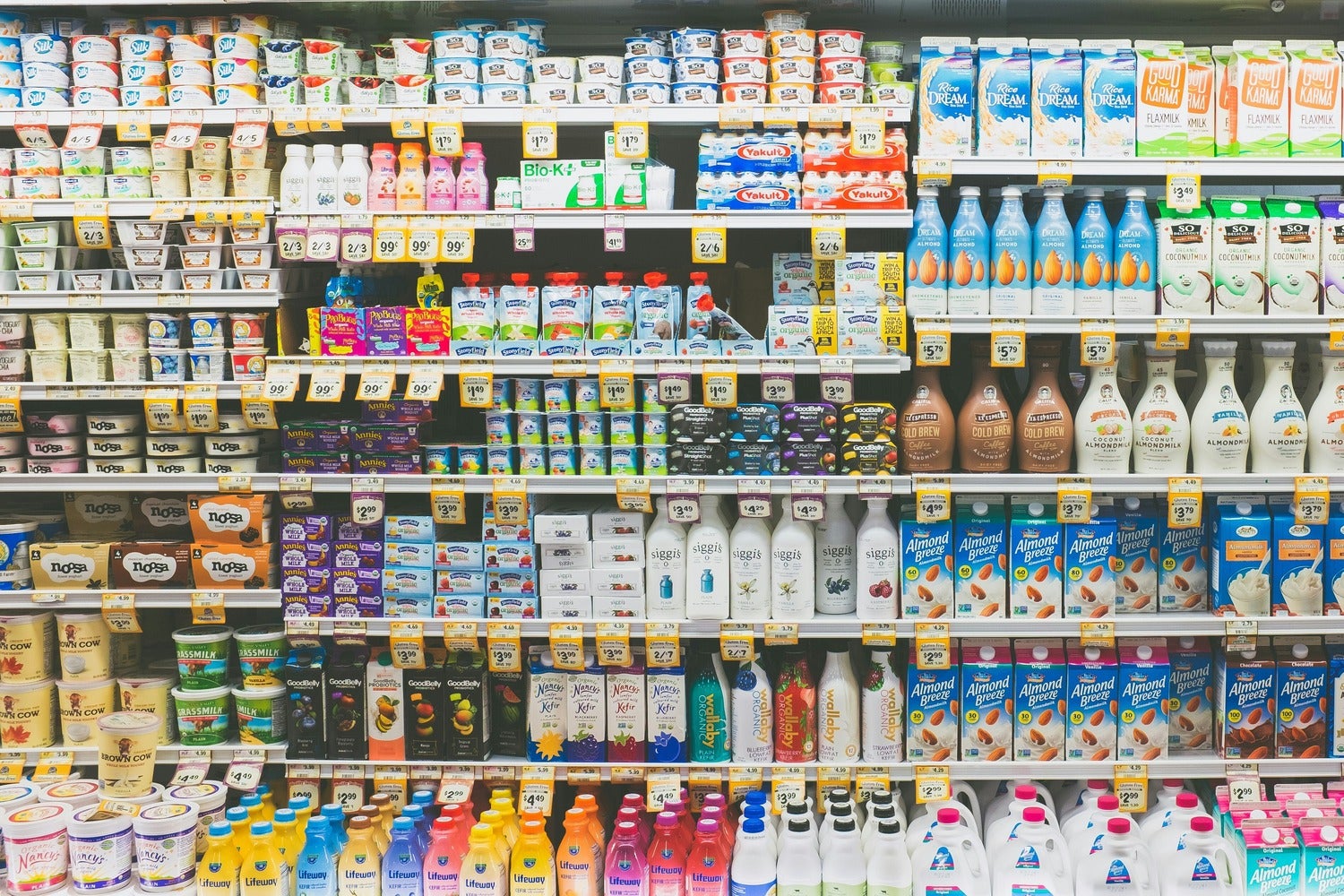Hey team, and welcome back to one5c! I’m 816 days into a Duolingo streak, and though I’m still maddeningly far from having an adult conversation in French, I keep going. Part of that is because I get regular “nudges” from my language-learning besties who are also working to maintain their streaks. A nudge can be a powerful thing. That’s as true in living a climate-conscious existence as it is for silencing the smug little owl that haunts my lock screen. This week we’ve got a couple little reminders that help address big problems, including a dispatch from Audrey (after the digest) on a means to make better food choices. —Corinne
WHAT WE’RE INTO THIS WEEK
By Sara Kiley Watson

Accountability check
Half of the world’s emissions come from a few companies
According to a new report from U.K.-based think tank InfluenceMap, 36 companies were responsible for more than 50% of the world’s carbon emissions in 2023. These include private fossil fuel firms like ExxonMobil and Shell and 25 state-owned enterprises like Saudi Aramco and Coal India. Most of the 169 companies the report tracks increased their emissions in 2023, which is clearly incompatible with the U.N.’s goal of hitting net zero by 2050. “While a few profit-driven corporations continue to expand fossil fuel infrastructure, climate disasters are hitting hardest in regions where people have contributed the least,” Johan Rockström, director of the Potsdam Institute for Climate Impact Research, said in a statement. “A global turnaround is not just urgent—it’s essential, and it must start with these key players.”
Consume this
Our favorite egg swaps
In January 2024, a dozen eggs cost $2.52 on average—and now that price has nearly doubled. For some climate-friendly eaters, this can be rough news: From a greenhouse gas point-of-view, eggs are one of the least-emitting animal protein sources out there, producing only a fraction of the emissions of similar quantities of beef and other meats. What is a frittata fan to do? Our planet-loving foodie friends over at Cool Beans have a detailed guide to easy egg swaps for everything from baked goods to mayo to frittatas. These aren’t intimidating switches, either: Most of ’em—like the liquid from a can of chickpeas, chia seeds, and applesauce—you may already have in your pantry.
Good read
Should we embrace ‘climatemaxxing’?
Jetting from place to place is one of the most carbon intensive things that anyone can do. Despite only 10% of the population ever setting foot on a Changing our behavior to be more climate-friendly can feel intimidating, but that’s less true if you think about it differently. Instead of giving stuff up, think about optimizing our lives in the same gamified, competitive way we approach our workouts, sleep schedules, and even how much water we drink. Kate Yoder unpacks the argument for “climatemaxxing” in her latest for Grist, which explores how making changes for the climate can be aspirational, joyful, and even a little competitive. “Climatemaxxing offers a more flexible approach to taking action,” Yoder writes. Be it mitigating your emissions by changing up your diet or by trimming back fire-prone vegetation near your home, you’re making a difference, she argues. And as we know well here at one5c, every little bit counts.
Study guide
Climate change is coming for our bananas
Some U.S. adults are aging up to 14 months faster than their peers. The reason? Living where it’s hot. A new study in Science Advances found that loBy 2080, 60% of the land that is currently suitable for large-scale banana plantations in Latin America and the Caribbean could no longer produce what is the most-purchased fruit in the U.S. A new study in Nature Food has found that temperature rise and changes in annual rainfall make typical banana plantation land in countries like Colombia and Venezuela “almost entirely suboptimal for export production.” The authors say there are ways for farmers to adapt to these changes—like increasing irrigation and breeding for tougher, climate-resilient banana varieties—but also point out that growers will need help financing those measures.
MIC-DROP CLIMATE STAT
2035
The year we may see no ozone hole depletion in the Antarctic, thanks to global cooperation to phase out the use of the chemicals that caused it to break down, according to a new analysis in Nature.
CLIMATE SPEAK
How to make food labels that change minds
By: Audrey Chan

Food systems make up about a third of global greenhouse gas (GHG) emissions, which means rethinking what we put on our plate can play a huge part in slashing our impact. But even with that knowledge, it can be a lot to ask for customers to keep track of which meals pack a heavier climate punch when they’re browsing the grocery aisles.
The practice of carbon labeling—literally emblazoning a product’s carbon footprint on its packaging—is one possible solution. But it’s imperfect: It can have only a small impact on our everyday shopping, and if implemented carelessly, it also can be a force for greenwashing, Laura Lee Cascada, senior director of campaigns at Better Food Foundation recently told FoodPrint. “One of the things we have flagged with carbon labeling is that because it may only focus on the carbon footprint and not any of the other environmental factors, it can lead to an uptake of fish and chicken,” she said. “Chicken has a carbon footprint 11 times that of lentils.”
Some experts argue that it’s not the labels themselves that are the problem, but what information we put on them. A new study published in the journal Appetite has zeroed in on what the authors think may be a better approach—one that also helps shoppers build a stronger understanding of what drives grub’s climate impacts.
According to study author Yi Li, typical carbon labels don’t include whether the food is animal- or plant-based––and that’s a major problem. For labels to be more effective, they should indicate what’s making its impact so hefty, she wrote in a recent post for The Conversation. The fix? A color-coded label that ranks foods from A (low emissions) to E (high emissions), but that also includes icons indicating whether a product is made mostly from animals or plants.
They call this approach an “item mapping” label, because it helps consumers connect the dots between a specific food source and its carbon impact. With this system in place, the authors found that only 19% of survey participants chose a meat-based snack over a vegetarian option, a more than 10% difference compared with uninformed participants.
The behavioral science that makes this work
Labeling food to change behavior isn’t a new idea. The EU has required front-of-packaging nutrition score labeling on prepackaged food for more than a decade. Whether for health or sustainability, these markers work via the concept of “behavioral nudging,” which says that the design of an environment can influence the choices people make. Food scientists have found that this approach is useful and cost-effective for informing dietary decisions, all while preserving consumers’ freedom of choice.
Carbon labeling, specifically, isn’t required by law in any country (efforts to make an “eco-score” a permanent fix in France were axed last year), and there are no official systems in the U.S.—at least not yet. But recent experiments have shown that even a little digital nudge can go a long way. When online grocery platforms display CO2 info and bundle plant-based products together, consumer selections of plant-based items jump from 25% to 37%.
Still, the effectiveness of these interventions depends on how engaged consumers already are with sustainable eating, meaning labels are just one part of the puzzle. Stepping into a supermarket with a solid understanding of the links between consumption and climate––whether that’s through the classroom, reading something like one5c on the regular, or government guidelines––can establish that baseline knowledge, with or without carbon labels.
